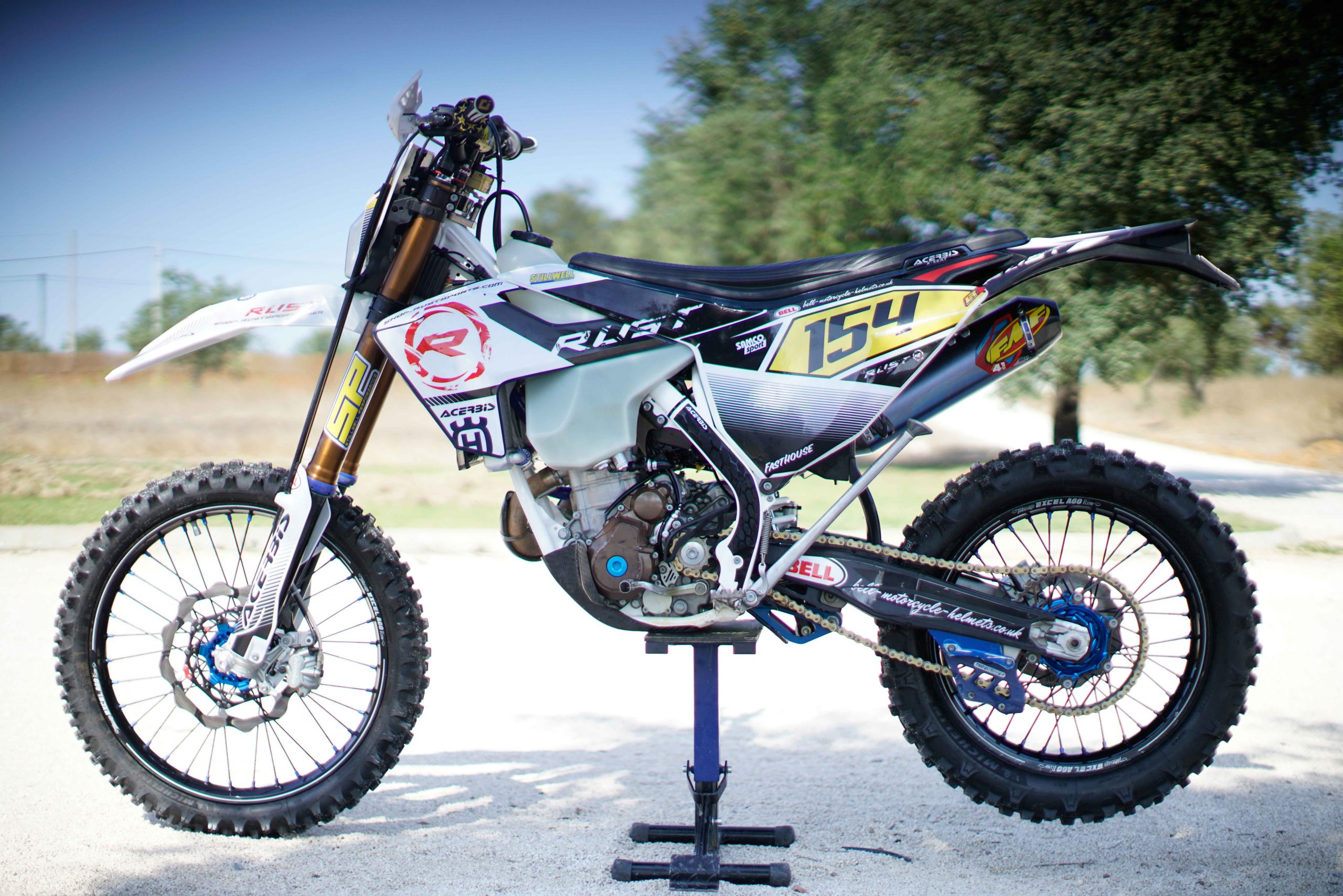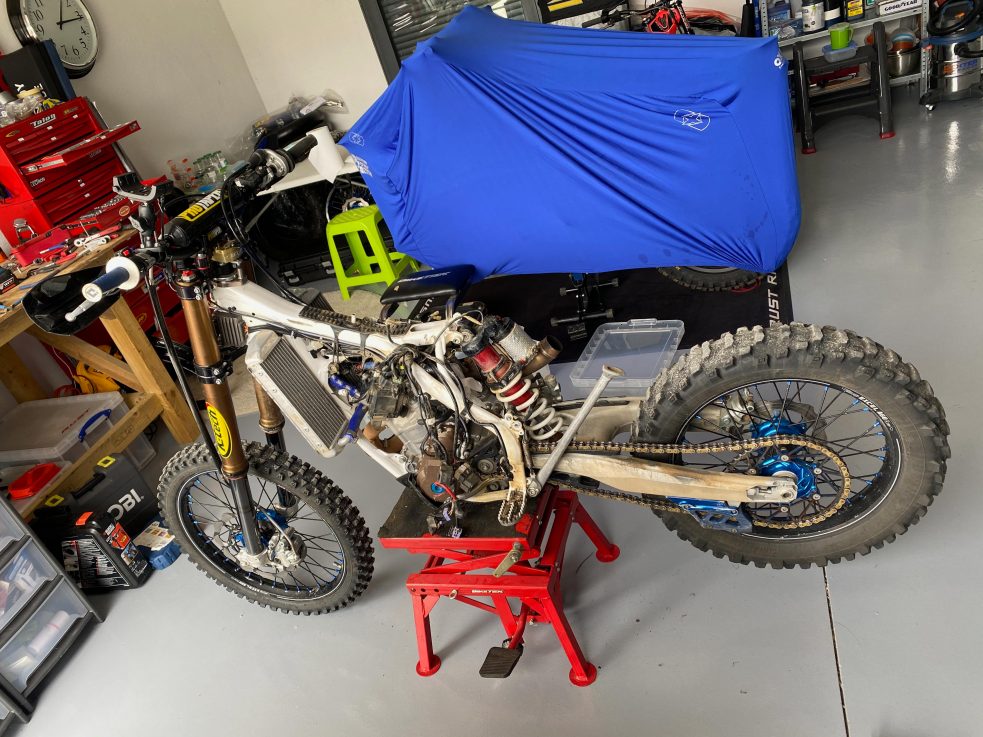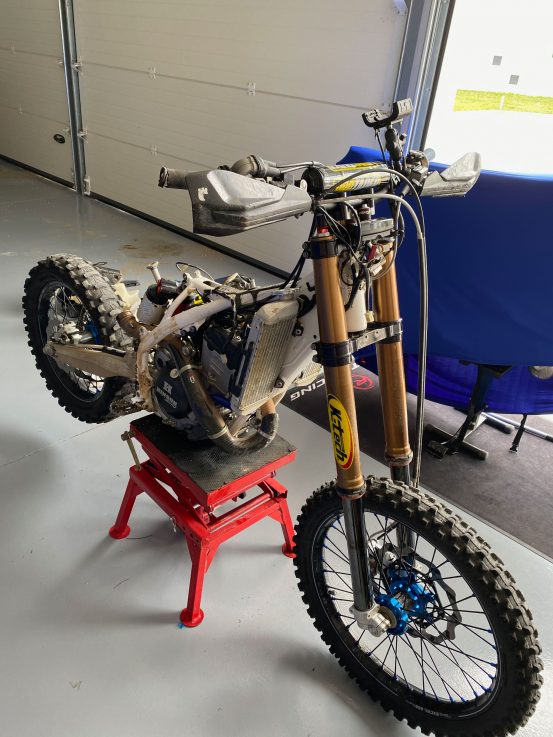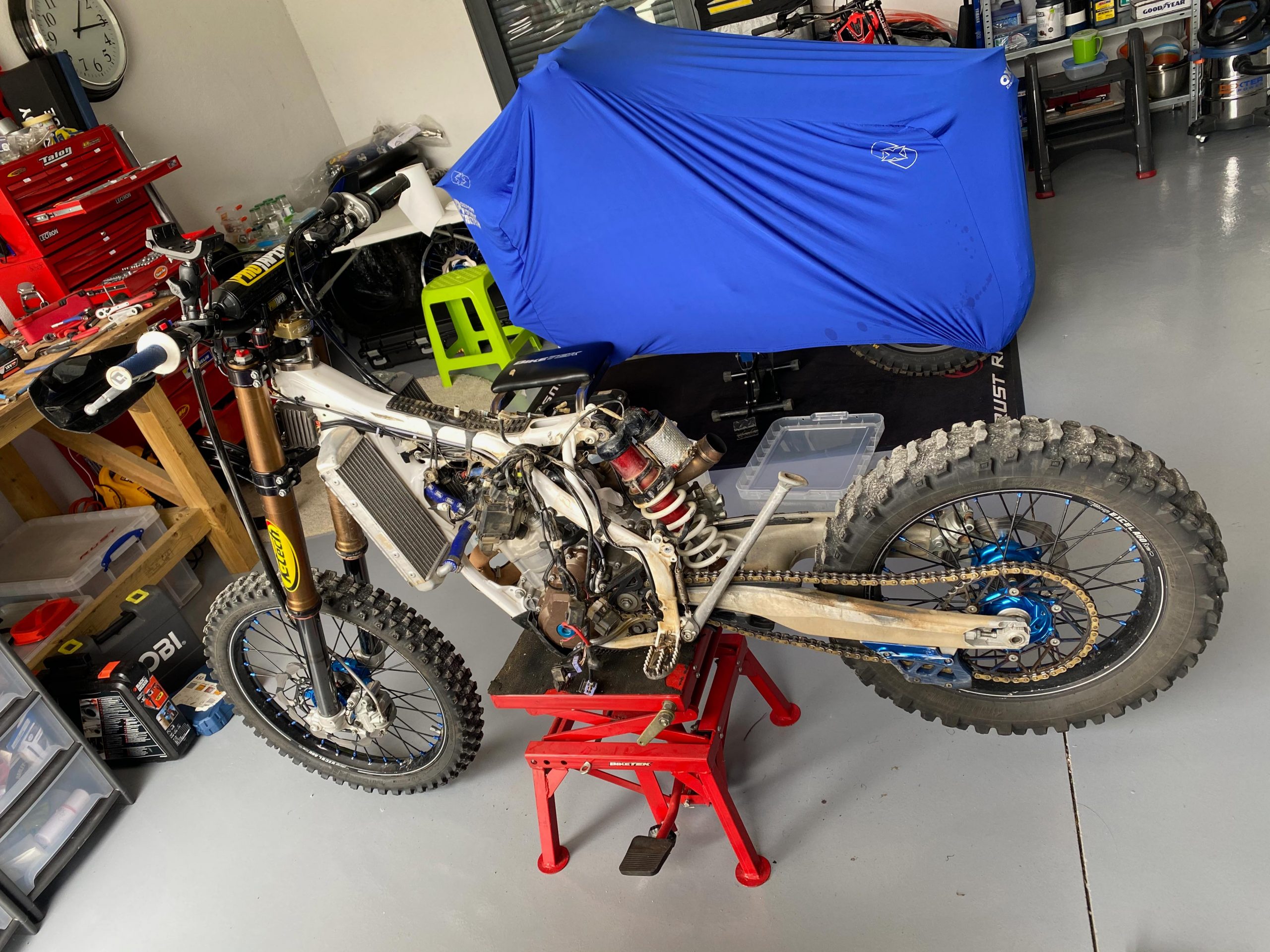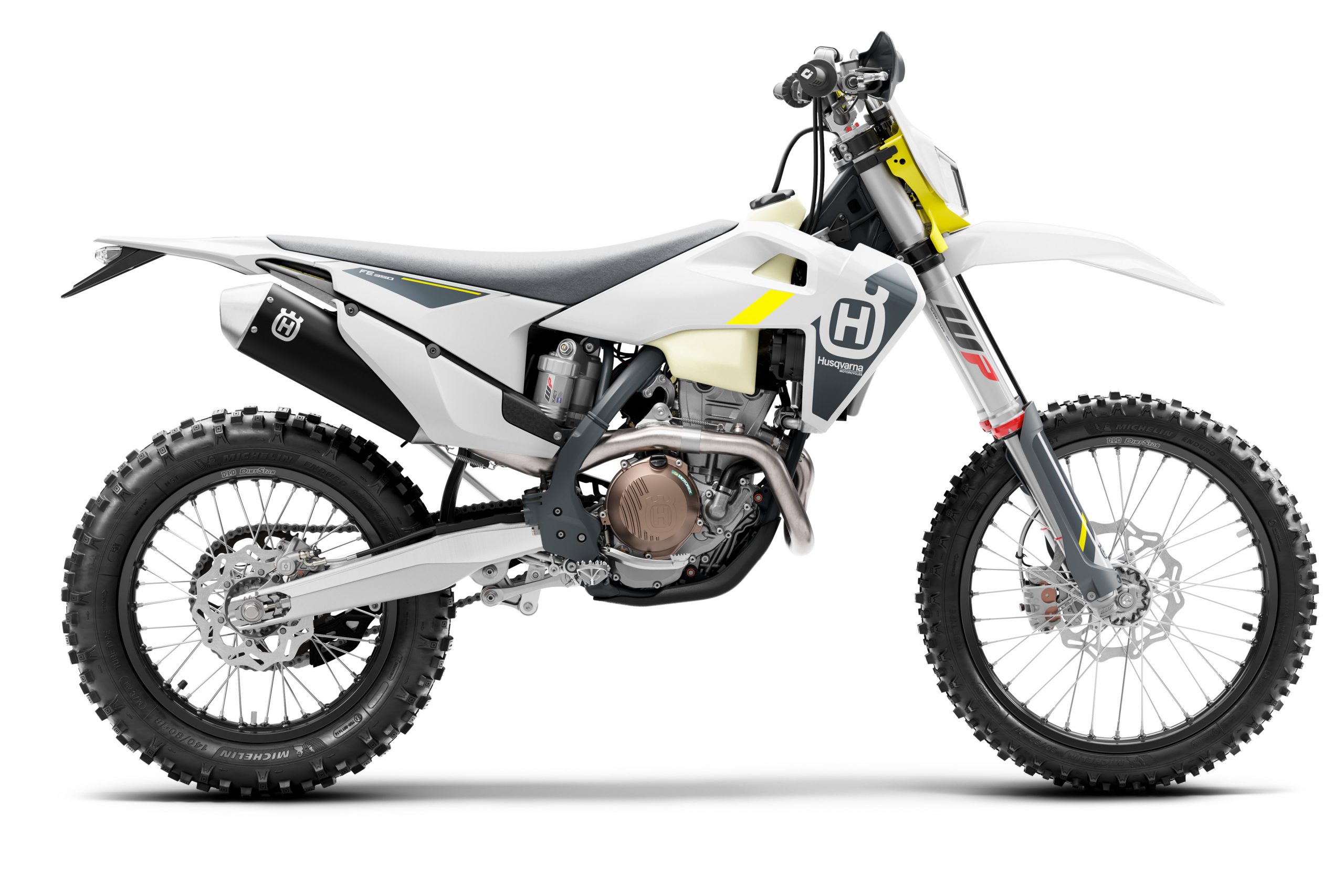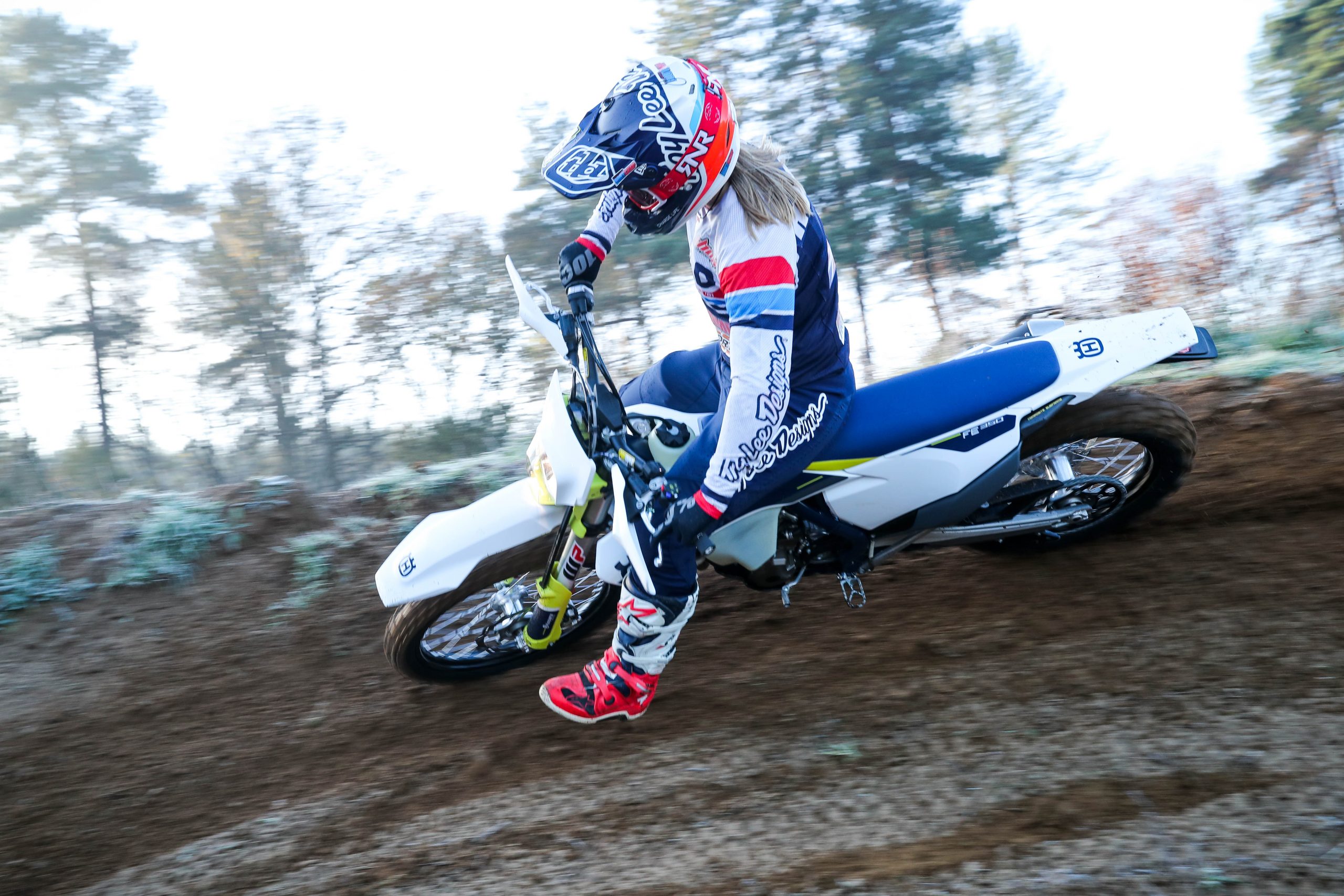WHY?!
Why did I decide to contemplate and tackle a rebuild project on ‘recently old’ 2017 Husky FE350? Especially considering that I’ve had no real experience with tackling a rebuild of a DOHC four-stroke motor amongst what would be a list of other firsts for me, including the electrics.
Well, I have both my old bike to thank as well as Husqvarna, the latter for making such sweeping changes to their 2020 ‘new generation’ bikes that if I’d liked the changes they made to the 2020 bikes (I had pre-ordered one) I probably wouldn’t be writing this story. In short, after getting to ride the 2020 bikes at the launch I simply preferred the geometry, ergonomics, and engine characteristics of my old bike. Don’t get me wrong it has foibles and annoying design faults that needed addressing but those made me love the bike even more.
I got this bike in late 2016 so it had been used for four seasons and I’d put about 180 hours on the bike in total. That’s a lot for an off-road bike – in both age and hours on the engine.
THE COST COMPARISON
Another factor was cost. My existing bike had a good few aftermarket upgrades installed and besides me having to pony up a fistful of sheets for a new bike, I would have to spend money on some aftermarket must-haves on top of the price to match the spec of my old bike. So given my opinion on the new bikes and the cost consideration, the decision was an easy one. It would be cheaper to build my own 2022 model Husky and I was convinced I could make it better than what I could buy off the dealers’ floor from Husky!
TECH EXPERIENCE?
As I mentioned previously, I have zero experience on four-stroke engines other than changing oil and filters – that’s it! I will confess though that I do have a good working knowledge of two-stroke motors. I worked on all my own race motors from the age of 13 (42 years ago) and have continued doing so on all the two-stroke bikes I’ve owned since.
As for electrics, well… there are no electrics on a two-stroke and on top of that I have never considered myself naturally adept at anything electrical. I was nervous. I then had to consider the frame, paint jobs, suspension, wheels etc. all of which I had dabbled with in very small part but I’m a rookie in all departments really.
The only thing in my favour was that I have over the years developed a good ‘feel’ for how a bike should feel and run. My two-stroke tuning and set up experience had taught me the benefit of working on your own bikes – motor up. You get attuned to the character of a bike and that cannot be underestimated. It’s probably the one factor that gave me the balls to consider doing a project of this scale with no experience. I knew I would learn a considerable amount during the build, and would make mistakes – but that’s the fun of it. I’m always trying to strive to learn new things, to improve myself and my skills whether that be in the workshop or on the bike.
MAKING MY OWN 2022 HQV FE350…
My goals for the rebuild/refresh was to tackle the build of the motor myself. I like the power delivery of this engine, but I felt I could make it better suited for the type of riding I wanted to be doing on this bike.
Secondly, I wanted to freshen up the look of the bike. If I was going to pull off making it look a little more modern, the frame, plastics, graphics, wheels would all need to be updated along with the hidden elements like the electrics. I am a little too OCD to be happy with the way the factory wires its wiring looms, it’s confusing and I felt I could simplify the loom considerably since I would never be running any indicators, keyed ignition etc.
Spoiler alert:
I’ll tell you this now: I did it! It only took 22 months (ahem), I didn’t anticipate that, but given the lockdowns and restrictions I actually didn’t miss that many riding opportunities. And to me it was all worth it… and I’ll show you what and how I did it over the coming issues!

